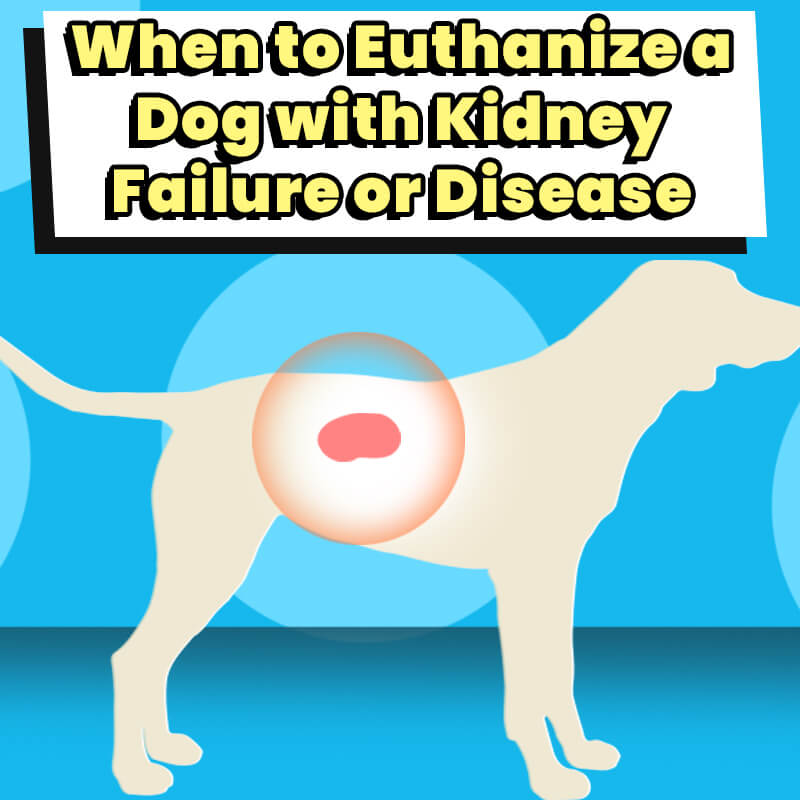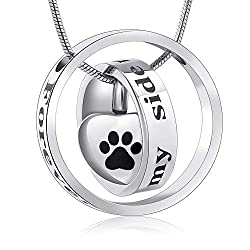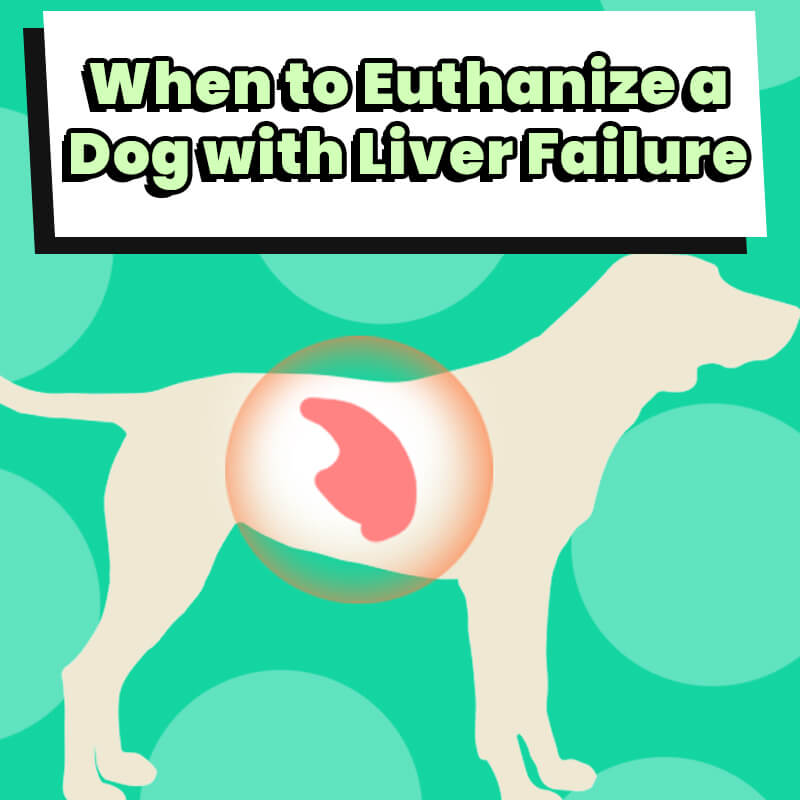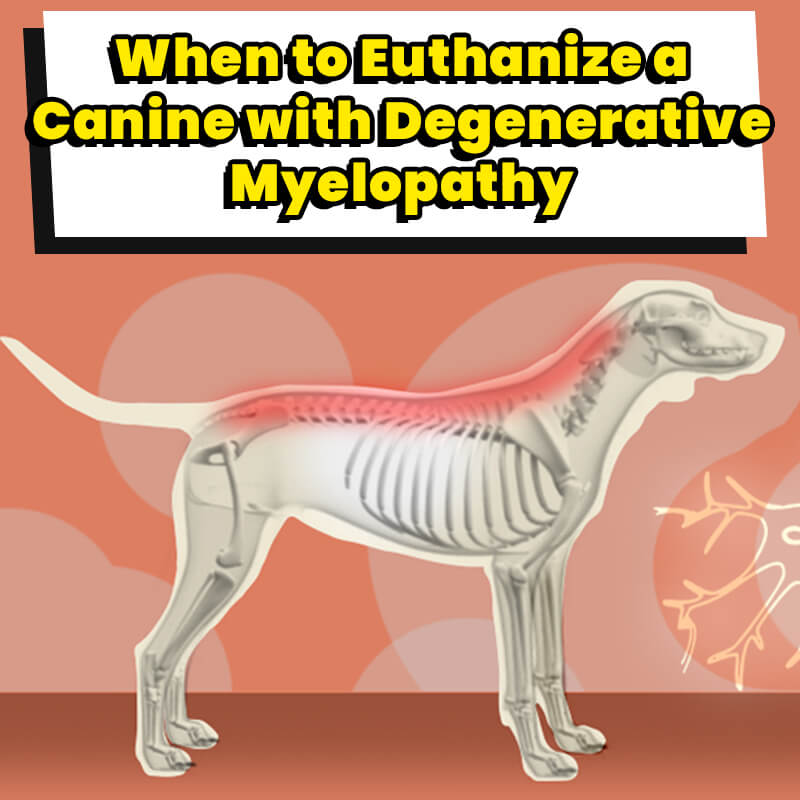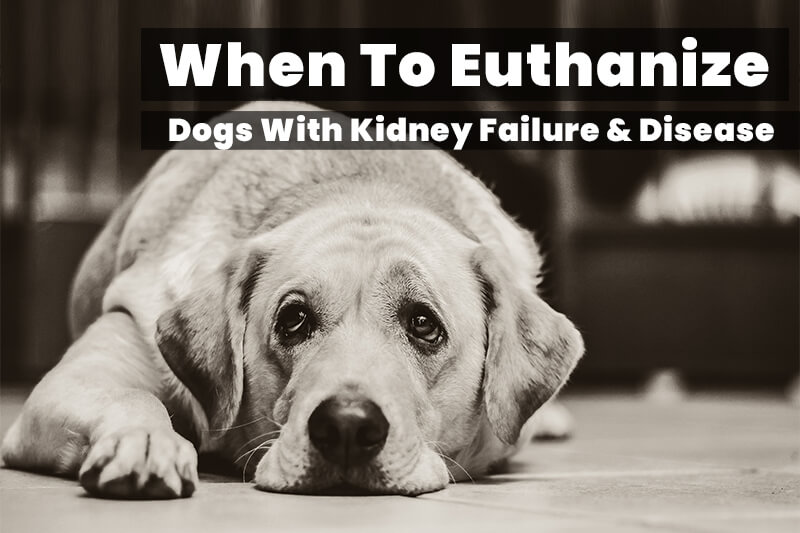
Considering euthanizing your dog is a big and often emotional decision. When a chronic lifelong disease such as canine kidney failure is discovered and the impact the disease has on your dog is considered, is euthanization the best choice? We recommend that you always consult a veterinary professional about your options.
In this comprehensive guide, we will share several helpful tips on how to best take care of your furry family members should they have kidney failure or disease.
Sometimes your K9 companions may show signs and symptoms that may be similar to other health issues like tracheal collapse so we will go over in details what they are and how you can detect them early on to prevent the health condition from worsening.
Keep reading because we will also cover some effective coping and decision-making techniques you can use if you choose this route.
Table of Contents
When to euthanize a dog with Kidney failure?
If you are thinking about euthanizing your dog the first step is to talk to your veterinarian. Only a professional can give you advice on how to handle your dog during their time of need.
Together with your veterinarian, you can discuss the options you have regarding medical and surgical treatments available to treat your pet. Your vet may be aware of new treatments that cannot be found online, so it’s a good idea to talk to them first. Guidance from the professional should be your first stop when seeking advice.
Most vets will look for signs that your dog is in pain. Although symptoms vary based on what condition your dog is suffering from and what stage they are in their illness some common signs of pain cannot be ignored.
Below are some common signs to look out for that let you know your dog is experiencing discomfort.
1.) Frequent urination coupled with a noticeable increase in water consumption.
2.) Your dog is experiencing diarrhea on an almost daily basis or frequently vomits.
3.) Your dog’s locomotion seems a bit off, are they having difficulty walking normally or standing?
4.) Is your dog not eating like they used to? Are they eating less or do you have to force them to eat?
5.) Breathing issues or decreased energy could be signs of several conditions which can effect dogs.
6.) Also, take note of any changes in appearance, key parts of the body to inspect are the gums, discoloration of the gums (such as blue gums) could be a sign of a health issue. The presence of ulcers or excessive dryness in the mouth could also be a cause for concern.
7.) High blood pressure and increased heart rates are a common symptom of advanced renal failure in dogs, keep an eye out for this.
READ NEXT: When to Euthanize a Dog with Liver Failure
Euthanizing is an argument of its own, but we will go over some important information for a better understanding of your dog’s needs during renal failure.
First, let’s cover some of the basic information associated with renal failure in dogs. Then, we’ll go over why some dogs may have it, and the signs and symptoms of kidney failure in dogs.
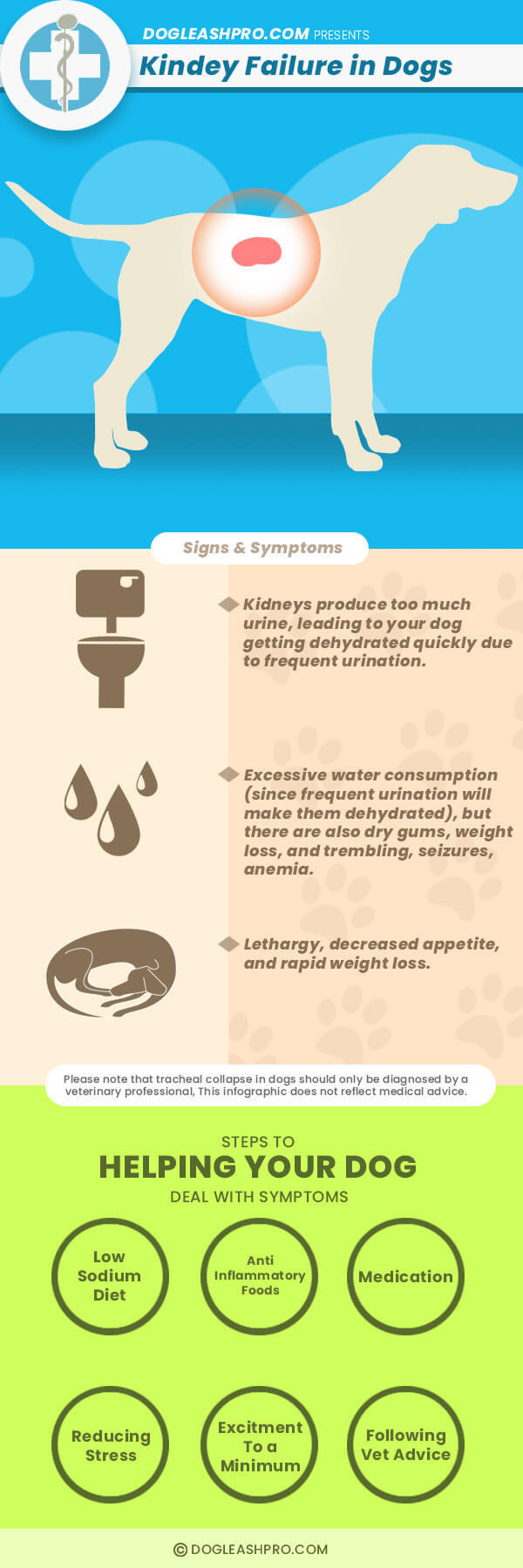
What is chronic renal failure?
Chronic renal failure in dogs is characterized by the inability of the kidneys to filter the blood properly.
It’s more commonly called chronic kidney failure (CKF). It’s not the inability to produce urine.
In fact, the kidneys produce too much urine, leading to your dog getting dehydrated quickly due to frequent urination.
Since your dog is going to the bathroom more often they are also urinating out lots of essential macronutrients. Things like salt, potassium, magnesium, and other minerals are lost due to frequent urination.
DON’T MISS: Dog Lymphoma (When to Euthanize)
Why does it happen?
Aging is the main culprit responsible for renal failure in dogs. As the body ages, things just don’t work as well as they used to, and eventually fail.
According to the Washington State University College of Veterinary Medicine, chronic kidney failure in dogs can also be caused by birth defects, bacterial infections, and poisoning from consuming harmful chemicals such as antifreeze. They do state that often the cause of CKD is unknown but age plays an important role.
Your dog’s renal tissue wears out over time and isn’t able to serve its function properly anymore. This depends on the dog’s size – since smaller dogs have a longer life span, kidney failure will occur later in life, and with bigger ones, it might show around the 7th-8th year of life.
The first signs of kidney disease in dogs
It will probably be excessive water consumption (since frequent urination will make them dehydrated), but there are also dry gums, weight loss, and trembling, seizures, anemia, due to mineral loss through urine.
The signs will start showing after at least two-thirds of the kidney tissue has been destroyed, so if you see the signs, most likely, the dog has already been ill for some time. To avoid this and keep on top of your dog’s health, take your dog to the vet for a checkup at least once every 6-7 months.
What are the stages of renal failure in dogs?
There are 4 stages of renal failure in dogs based on the severity of clinical signs:
Stage 1: No apparent clinical signs.
Stage 2: Some clinical signs are noticeable, such as excessive drinking and increased volume of urine.
Stage 3: More clinical signs show up, such as, weakness due to lack of potassium, pale gums, blood in urine, loss of appetite, foul breath, and weight loss.
Stage 4: Damage to the kidneys is already severe with more clinical signs noted like uncoordinated behavior or stumbling, ulcers in the mouth, intestinal seizures, vomiting, and a decrease in urine production.
How long does end-stage kidney failure last in dogs?
Stage 4 renal failure has a median survival time of 14 to 80 days. By this time, the filtering units or nephrons in the kidneys would have stopped functioning.
RECOMMENDED: What is the Right Time to Euthanize a Dog with Osteosarcoma?
Can dog renal failure be treated?
Yes and no, just like in humans the earlier you are able to catch the issue the more successful the treatment can be. If the kidneys are damaged beyond repair, there’s nothing you can do, but if it’s diagnosed early on, the dog will most likely live a happy life.
An altered diet (low sodium and low phosphorus), and ensuring your dog gets proper vitamins and minerals, passive treatment such as stress reduction are all common recommendations.
Your vet may also prescribe certain medications to treat your dog’s unique needs. Things like subcutaneous fluids and blood pressure medication may be prescribed.
Since kidney failure in dogs is chronic, it means that it will always be there, so you will have to be careful in the future, but that doesn’t mean that your dog won’t be happy or be able to live their best life.
If your dog’s kidney failure is at an advanced stage there won’t be much that can be done. Most professionals recommend just making your dog as comfortable as possible. That can include providing your furry friends with a comfortable bed that doesn’t put pressure on their stomach or abdomen area.
As we can see, although there are common recommendations like making sure their bed is comfortable, you as their owner will have a better idea of what your pups enjoy and how to make their final days comfortable.
At this stage, it may be a good idea to consider euthanasia.
What about euthanasia?
Now we’re getting to the hard part. With pet euthanasia, we often do something that we shouldn’t – think about what would be the easiest for us. It’s not us being euthanized.
It’s hard, but we must put our pets’ needs and feelings before our own. So, when do we euthanize?
If you’ve tried every treatment that you can (note: don’t exhaust your dog with countless treatments. You might want to help, but if it’s too much for them, consider stopping) and there’s still no positive response, then you might want to consider euthanasia.
In the end, it’s an issue of quality of life and what you can afford.
CHECK OUT: Canine Degenerative Myelopathy (When to Euthanize)
Why should I consider euthanasia for my dog?
If your dog is in pain, suffering, has a low quality of life, and doesn’t enjoy being alive anymore because of an illness, it might be better for them to be euthanized.
Keeping a pet alive just for ourselves is selfish, and by no means should we ever do that.
Euthanizing isn’t about not wanting our canine friends anymore, but about gently putting him or her to sleep to avoid further suffering. Consider everything your pet might be feeling, then think about the next step.
What else can be the sign that my dog is suffering?
Suffering isn’t only physical. Your furry companion may experience depression during their illness.
Signs of that will be obvious. They’ll spend a lot of time sleeping and stop eating and drinking, your touch won’t be enough to soothe them, and they’ll no longer be able to go to the toilet by themselves.
Depression is as real as kidney failure, and it might affect their life negatively just like the physical illness itself, or even worse.
Consider cost of treatment
Sometimes your dog might need a treatment that will help increase their quality of life, but you won’t be able to afford it. If there’s no way for you to get the money for treatment and there is no one that could help you financially.
If your dog can’t live a painless and normal life without the treatment, you should consider euthanasia. Be sure to speak to your veterinarian about all your options and possible payment plans.
Not being financially stable enough to provide care for your pet can be heartbreaking especially with the cost of pet care in the USA rising.
If you are concerned about your pet getting sick and being unable to afford treatment then looking into pet insurance may be a good thing to consider.
Pet insurance starts as low as $10 per month but can get more expensive depending on which plans you choose. If you can afford it then it might be a worthwhile investment that can give you some peace of mind.
Keep in mind that the earlier you get coverage for your dog the better since the monthly cost goes up with the age of your dog.
SEE ALSO: When To Put A Dog Down With Torn ACL
Is euthanasia a cruel choice?
That depends on who you ask. Euthanasia is painless and, by knowing the time and date, you get as much quality time with your furry friends as you can before they go.
It is controlled, monitored, and way less cruel than letting your pooch suffer under any illness that’s causing them long-term difficulties. Therefore, we believe that it is not cruel.
What happens during euthanasia?
It usually consists of two shots: the sedative and the one that has the euthanasia drug in it. Euthanasia drugs might sound scary, but it’s just medication that puts your pet to sleep very quickly.
Vets usually use pentobarbital, which is a seizure medication. It shuts down the heart and the brain functions within 2-3 minutes.
Regardless of what you may think, your pet won’t be in pain. You may notice that they twitch or not close their eyes fully, but those are normal things that happen during the procedure.
Is it OK to euthanize your dog at home?
It is your choice whether you want to euthanize your dog at the veterinary clinic or at your home. The most suitable place to perform it is where you and your dog can feel most comfortable.
Laws regarding pet euthanasia differ from state to state, but it is typically regulated and requires a licensed veterinarian or technician to perform the procedure.
An at-home euthanasia service includes the veterinarian first physically examining the dog and then giving you a briefing on how the procedure is done.
The cost of at-home euthanasia is more expensive ranging from $200 to $300.
ALSO READ: When to Euthanize a Dog with Hemangiosarcoma
What if I decide to do it?
Consult with professionals for advice and talk to your family and friends, not for the advice, but the comfort and consolation. Losing a pet is losing a loved one, so it’s expected that you’ll be sad and need someone to be there to walk through it with you.
Also, consider looking into available literature online, there are a number of great books regarding dealing with the loss of a pet.
Support groups can also be found on social media channels like Facebook, Reddit, and YouTube.
The discussions on these social media sites can include just about anything – from deciding to euthanize your dog to more first-hand experience regarding the best time to euthanize your furry companion when they are experiencing renal failure.
What to do after?
Only time heals. Like losing anyone you care for, losing a pet brings grief and sadness. You want to stay close to people who make you feel good and secure and make sure you’re considering everything fully. Make a decision to help your pet, whatever the cost may be.
Remembering your dog
After the euthanization procedure, your doctor will typically give you a couple of options as to how you want to bury your dog. You could go down the traditional route of burying your pet in your backyard if your town allows it, or burying your pet in a local pet cemetery.
Most veterinarians will recommend cremation as an alternative to traditional burial. You’ll be able to keep your dog’s ashes in your home as a remembrance of your late dog. There are a number of personalized products you can get such as urns and wooden boxes for storing your ashes.
Conclusion
Making the choice to say goodbye to your pet is definitely hard on both yourself and your family. Having all the facts and making the best decision for your pet can help you find some solace in knowing you made the right decision. Be sure to consult experts before making a decision regarding your pet’s health. An annual checkup at the vet for your pet can be a great way to catch any issues early on which can help increase the chances of successful early treatment.
Related Questions
If your canine companions are currently experiencing acute kidney failure, you will know because they will show signs of health problems. In the early stages of acute kidney failure, your pooch may be excessively thirsty and as a result, will urinate frequently.
If you suspect your furry family member may have kidney failure, don’t hesitate to contact your vet and inform him or her of your observation. Early detection is key.
If early stages of acute kidney failure are not detected, it will, unfortunately, lead to more severe kidney failure symptoms like loss of appetite, vomiting, and even lethargy.
Signs of later stages of kidney failure include vomiting blood or passing bloody stool. Your four-legged friends may even stop urinating altogether.
Be sure to get the appropriate treatment for acute kidney failures such as IV or intravenous fluids, antibiotics, and medications such as Zantac or Pepcid.
Unfortunately in some cases, kidney failure is a disease that can go from acute to mild to severe very quickly. If this is the case for some dogs, they may pass away within 24 hours from the time their first symptoms start.
In other cases, it may not be this severe. It can also take weeks or even months to get from mild to severe. Make sure to keep an eye on your furry friends and monitor them carefully.
Call your vet as soon as you can if you suspect that something is wrong. It’s better to take necessary precautions and have treatments available than it being too late with little to no options left.
A dog can experience pain when it has Kidney Failure. Kidney Failure is when his kidneys become impaired or damaged. This can happen from eating toxic food or poisoning, infection, or other events. When dogs have Kidney Failure, they may have symptoms such as abdominal pain, back pain, frequent urination, vomiting, diarrhea, and lethargy.
Each dog is different so the pain from Kidney Failure can affect one dog differently from another dog. If you know your canine friend has Kidney Failure, be sure to contact your vet and ask for advice on what you can do to ease his or her pain.
No, Kidney Disease does not have to be an end all be all for dogs. If your pooch has Kidney disease or you suspect he has Kidney Disease, the first step is to schedule an appointment with your dog’s vet. The vet may ask you to bring your pup in for an examination and provide appropriate surgical or medical treatment for your dog.
Since each dog is different and the magnitude of the Kidney Disease may vary from one dog to another, always consult with your vet first instead of trying to treat it yourself.
DISCLAIMER: THIS WEBSITE DOES NOT PROVIDE MEDICAL ADVICE
The information, including but not limited to, text, graphics, images and other material contained on this website are for informational purposes only. No material on this site is intended to be a substitute for professional veterinary advice, diagnosis, or treatment. Always seek the advice of your veterinarian or other qualified health care provider with any questions you may have regarding a medical condition.

With over five years of specialized experience as an animal writer, my expertise lies in dog nutrition, health, behavior, grooming, and training. I am dedicated to delivering helpful and informative content that caters to the well-being of our furry friends. My primary goal is to empower pet owners with knowledge and ensure our canine companions thrive in health and happiness. In my free time, I love volunteering at local dog rescue centers.
